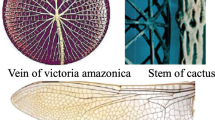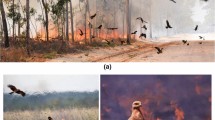Abstract
Structural bionic design lacks mature and scientific theories, and the excellent structural characteristics of natural organisms sometimes cannot be transferred into engineering structures effectively. Aiming at overcoming the existing problems, this paper summarizes three related theories: similarity theory, fuzzy evaluation theory and optimization theory. Based on the related theories, a method of structural bionic design is introduced, which includes four steps: selecting the most useful structural characteristic of natural organism; analyzing the structural characteristic finally chosen for engineering problem; completing the structural bionic design for engineering structure; and verifying the structural bionic design. Similarity theory and fuzzy evaluation theory are employed to achieve Step 1. In Step 2 and Step 3, optimization theory is employed to analyze the parameters of structures. Together with the thoughts of simplification and grouping, optimization theory can reveal the relationship between organism structure and engineering structure, providing a way to structural bionic design. A general evaluation criterion is proposed in Step 4, which is feasible to evaluate the performance of different structures. Finally, based on the method, a structural bionic design of thin-walled cylindrical shell is introduced.
Similar content being viewed by others
References
Yoseph B C. Biomimetics: Using nature to inspire human innovation[J]. Bioinspiration & Biomimetics, 2006, 1(1): 1–12.
Vincent J F V. Applications: Influence of biology on engineering[J]. Journal of Bionic Engineering, 2006, 3(3): 161–177.
Lu Y X. Significance and progress of bionics[J]. Journal of Bionic Engineering, 2004, 1(1): 1–3.
Smith S, Tlusty J. Current trends in high-speed machining[J]. Journal of Manufacturing Science and Engineering, 1997, 119(4B): 664–666.
Ren L Q, Chen D X, Chen B C. A summary of study on soil adhesion[J]. Transactions of CSAE, 1990, 6(1): 1–7 (in Chinese).
Zhao L, Chen W Y, Ma J F et al. Structural bionic design and experimental verification of a machine tool column[J]. Journal of Bionic Engineering, 2008, 5(Suppl): 46–52.
Ma J F, Chen W Y, Zhao L et al. Bionic design of aircraft reinforced frame based on structure of dragonfly wing[J]. Acta Aeronautica Et Astronautica Sinica, 2009, 30(3): 562–569 (in Chinese).
Ren L Q, Han Z W, Li J Q et al. Experimental investigation of bionic rough curved soil cutting blade surface to reduce soil adhesion and friction[J]. Soil & Tillage Research, 2006, 85(1/2): 1–12.
Gao K, Sun Y H, Gao R F et al. Application and prospect of bionic non-smooth theory in drilling engineering[J]. Petroleum Exploration and Development, 2009, 36(4): 519–522, 540.
Ren L Q. Progress in the bionic study on anti-adhesion and resistance reduction of terrain machines[J]. Science in China Series E: Technological Science, 2009, 52(2): 273–284.
Vincent J F V, Mann D L. Systematic technology transfer from biology to engineering[J]. Philosophical Transactions of the Royal Society of London A, 2002, 360(1791): 159–173.
Zhao L, Ma J F, Wang T et al. Lightweight design of mechanical structures based on structural bionic methodology [J]. Journal of Bionic Engineering, 2010, 7(Suppl): 224–231.
Ma J F, Chen W Y, Zhao L et al. Bionic design of columnar structure based on microstructure of bamboo[J]. Journal of Machine Design, 2008, 25(12): 50–52(in Chinese).
Author information
Authors and Affiliations
Corresponding author
Additional information
Supported by National Natural Science Foundation of China (No. 50975012) and Research Fund for the Doctoral Program of Higher Education of China (No. 20091102110022).
XING Denghai, born in 1986, male, doctorate student.
Rights and permissions
About this article
Cite this article
Xing, D., Chen, W. Systematic method of applying structural characteristics of natural organisms to mechanical structures. Trans. Tianjin Univ. 17, 293–297 (2011). https://doi.org/10.1007/s12209-011-1643-z
Accepted:
Published:
Issue Date:
DOI: https://doi.org/10.1007/s12209-011-1643-z




